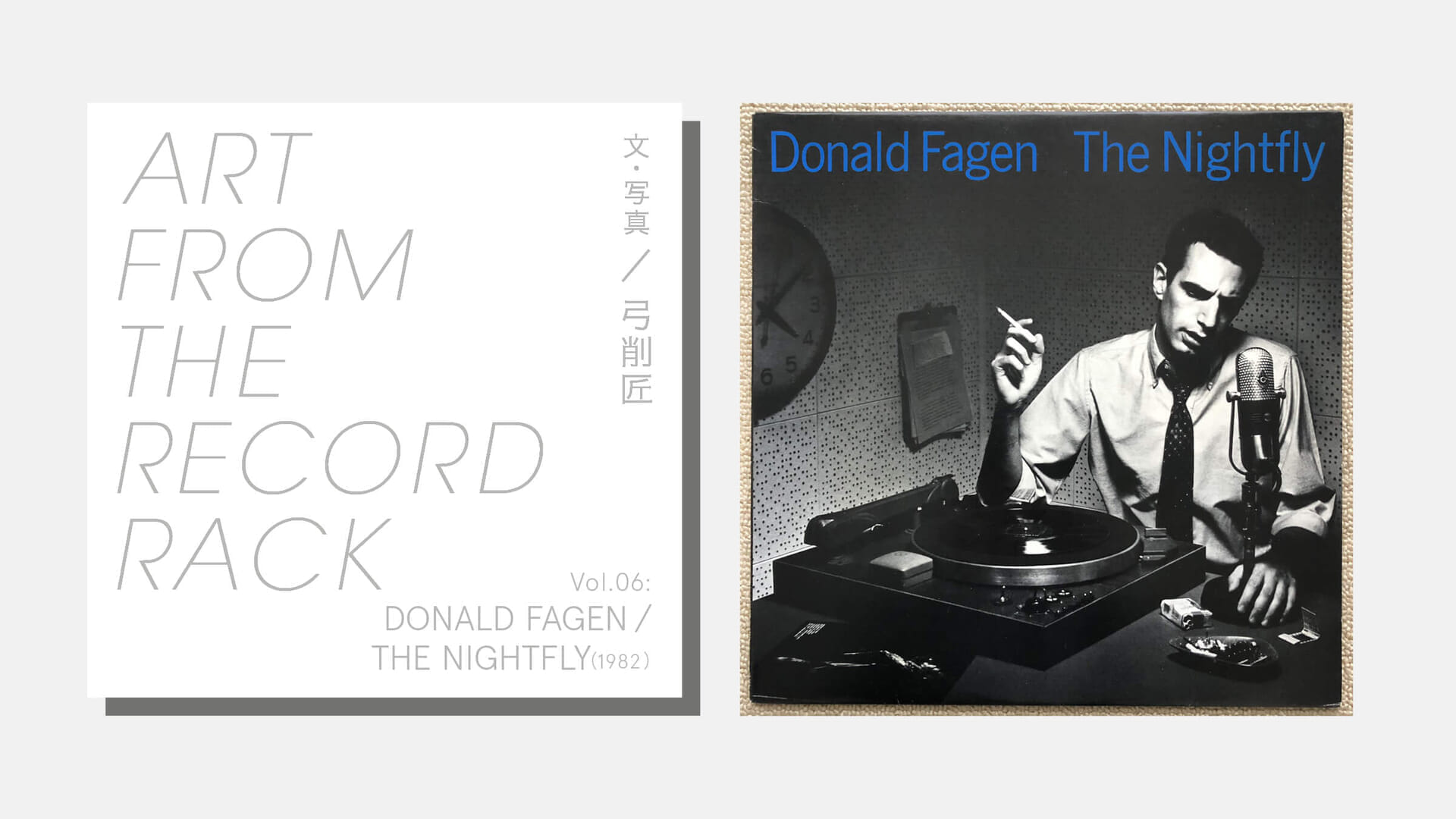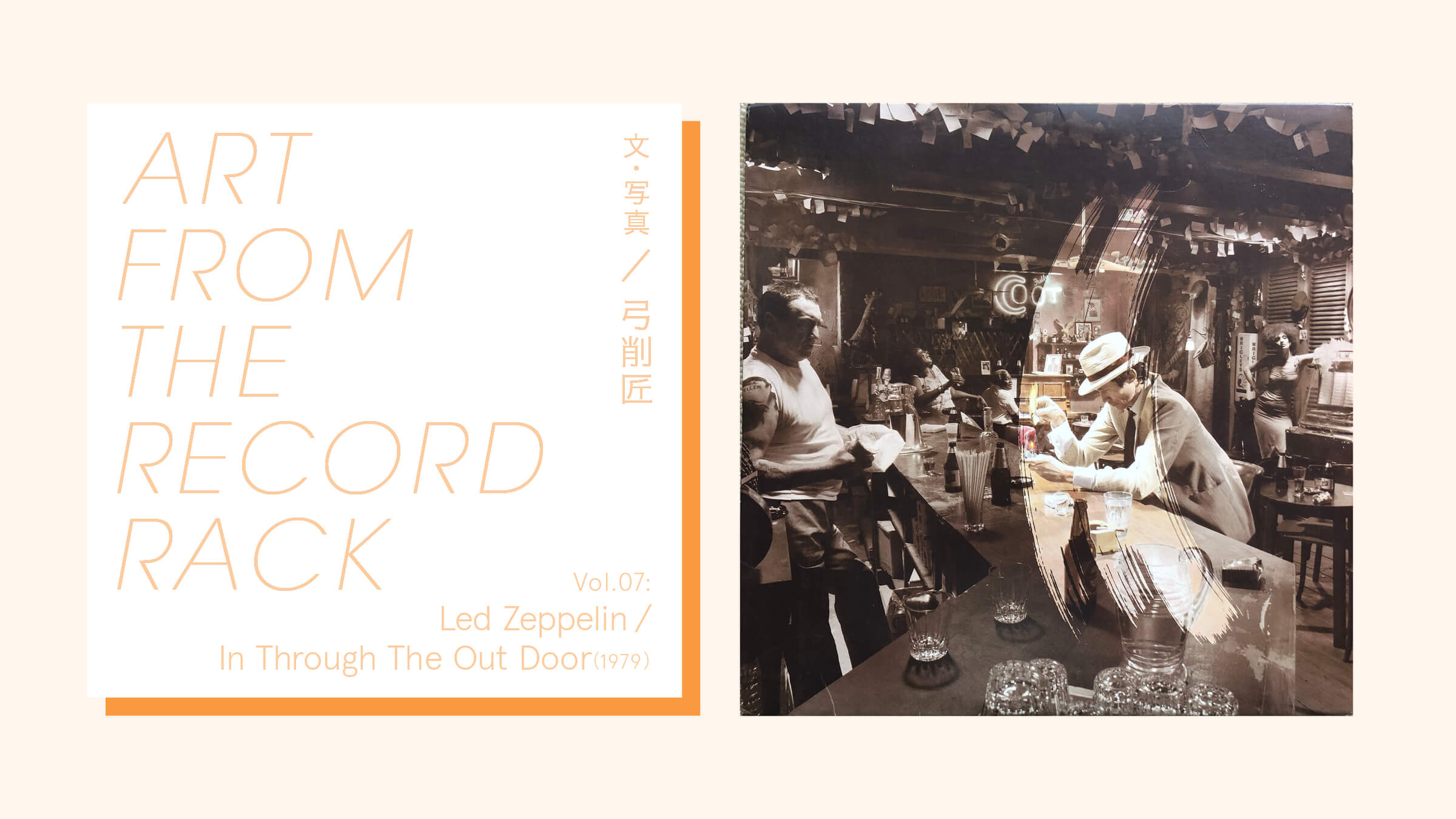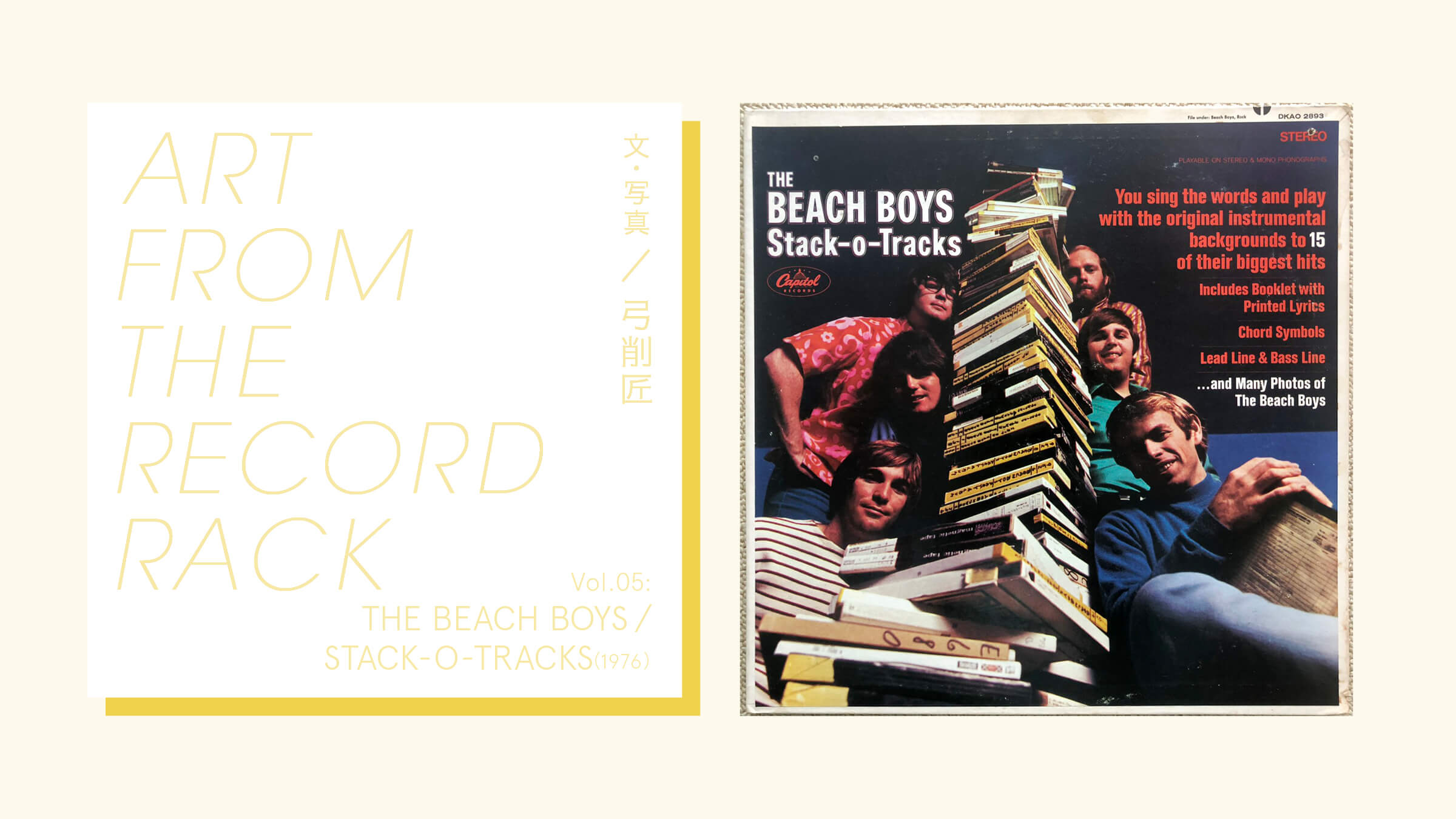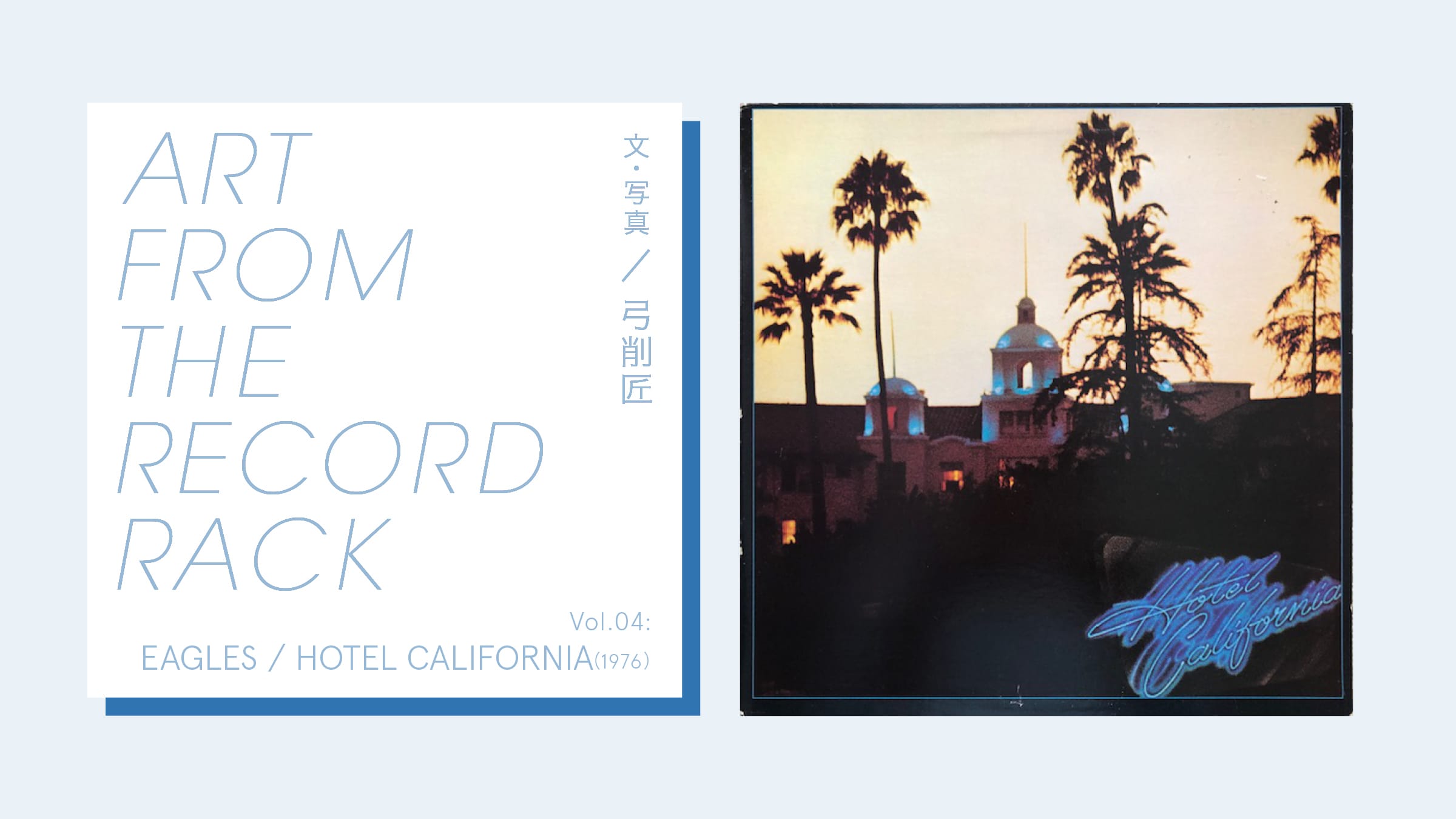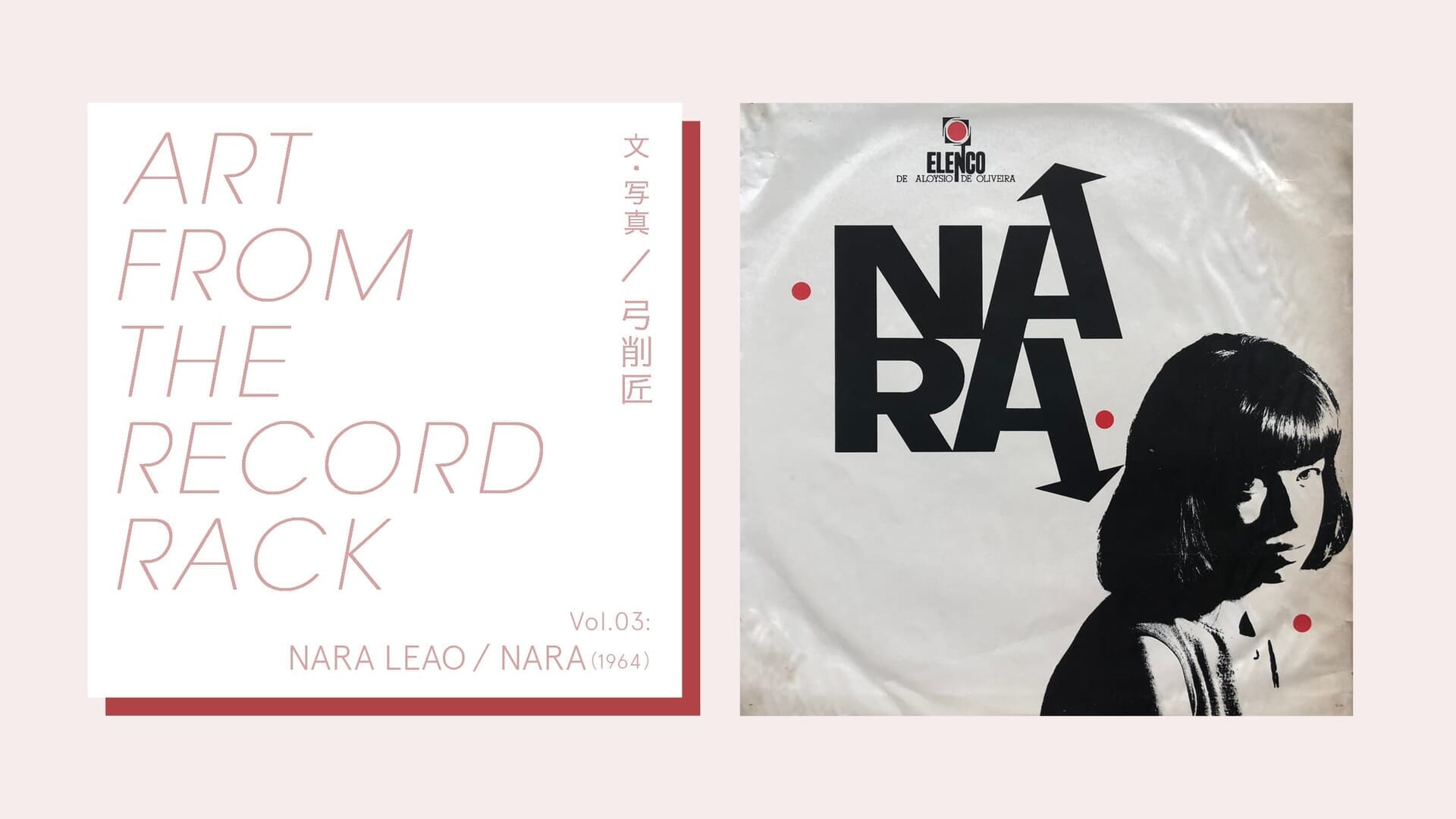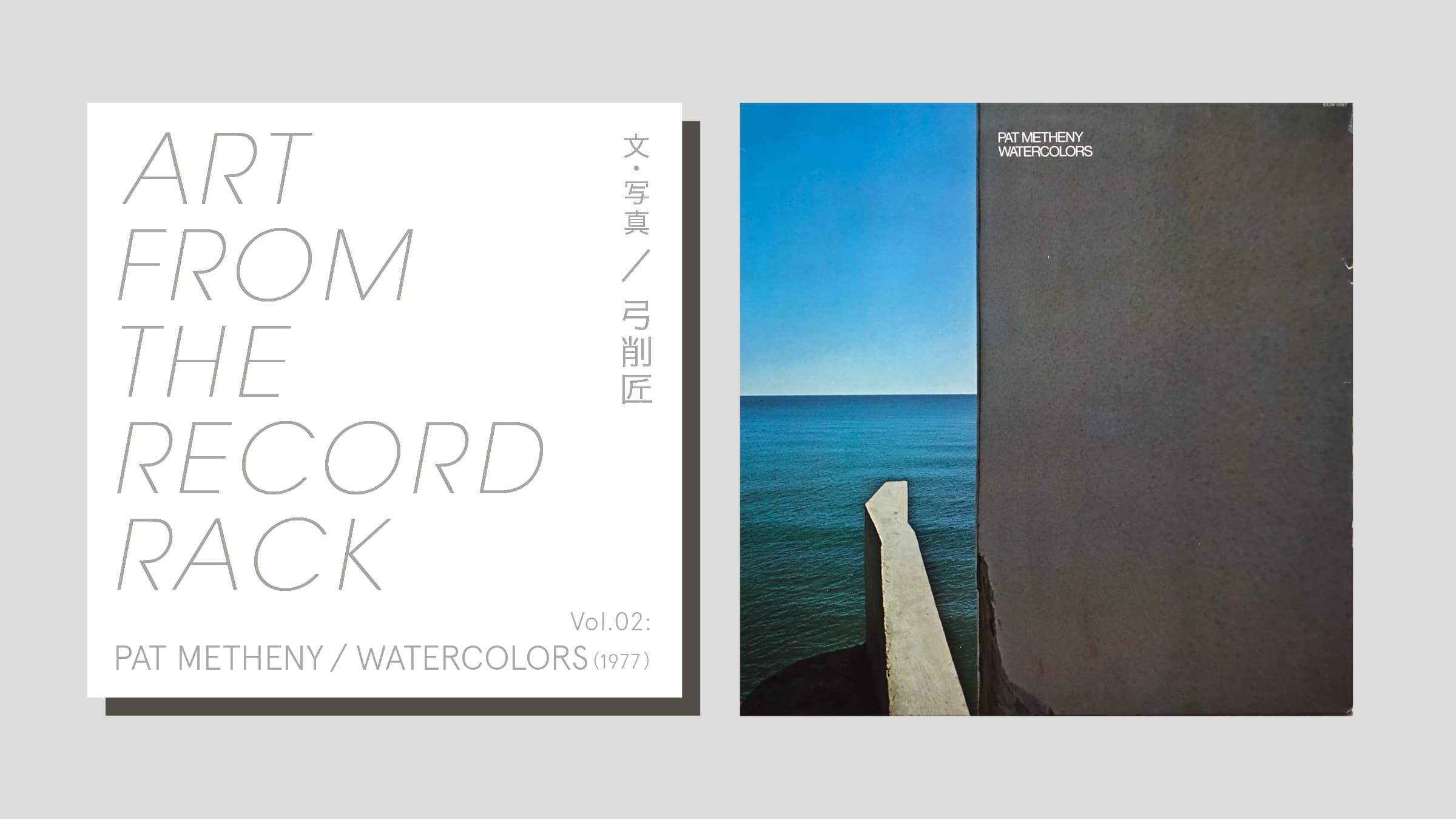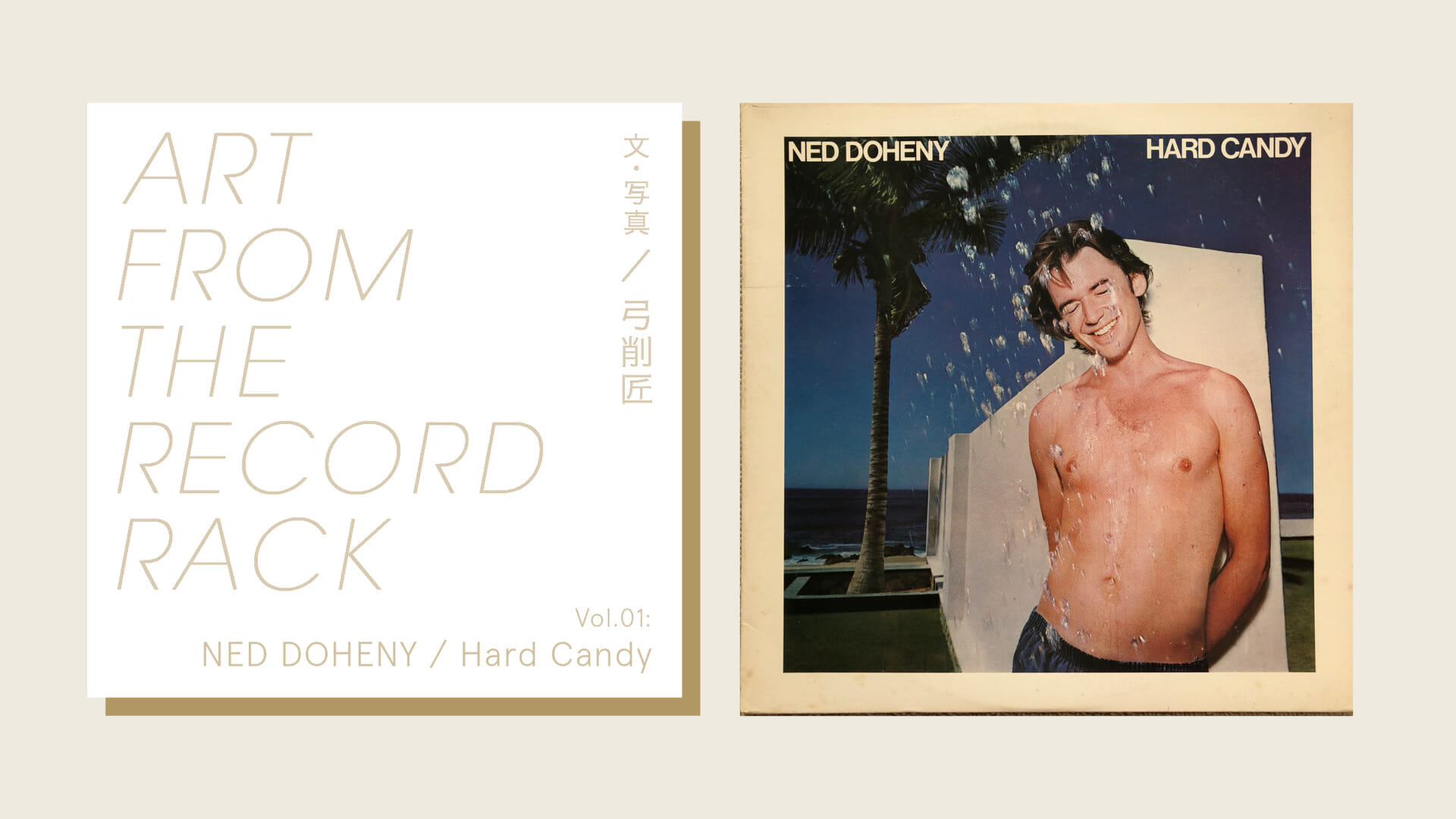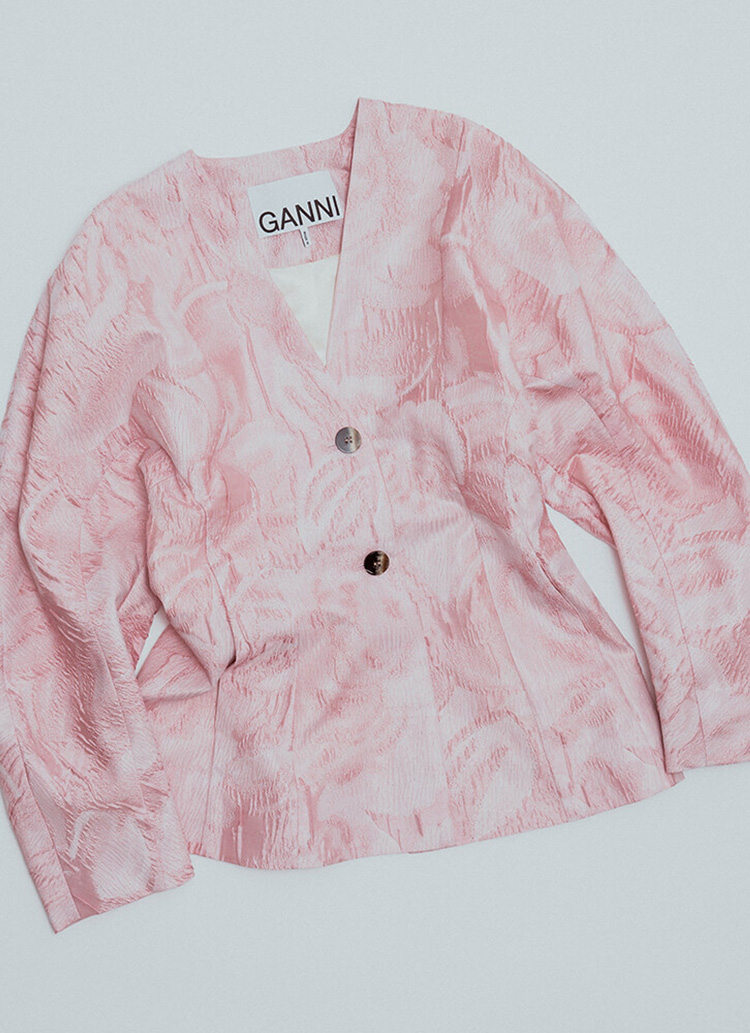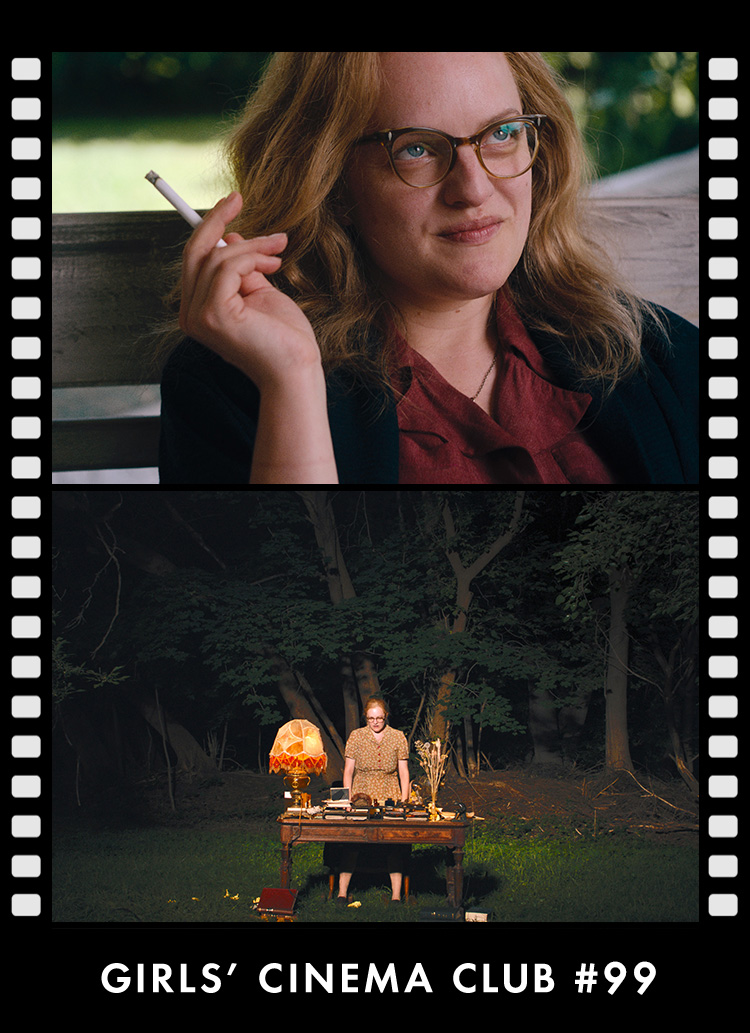Vol.06 DONALD FAGEN / THE NIGHTFLY (1982)
Hello, my name is Takumi Yumikiri.
In the sixth installment, we will introduce a historical masterpiece by Donald Fagen, one of the two top Steely Dan players who flirted with the Eagles in the previous installment.
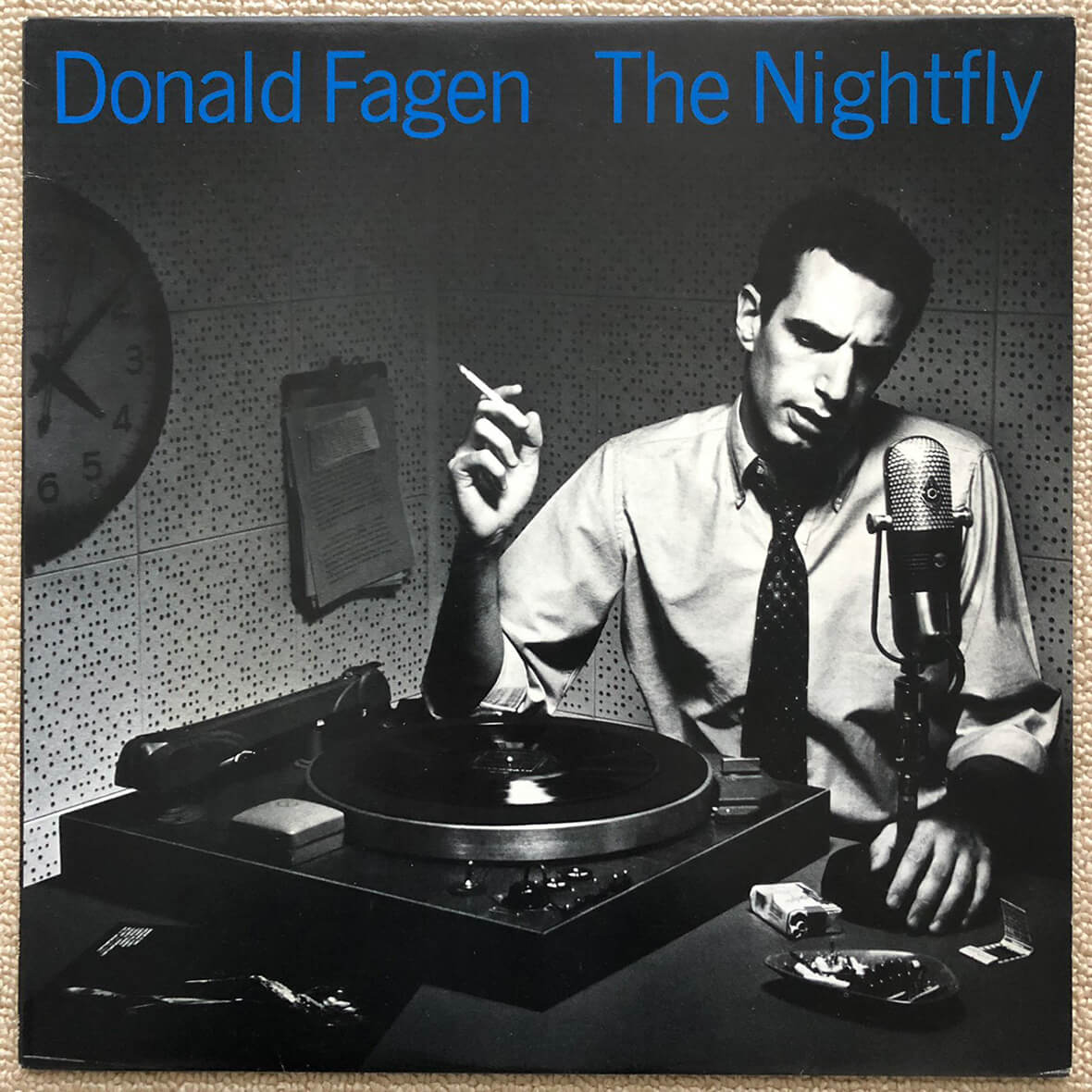
DONALD FAGEN / THE NIGHTFLY (US Original Normal Edition)
"Lester Nightfly at 4:09:03 a.m."
To this day, I have listened to this record tens of thousands of times.... Every time I drop the needle on the record, I think about the elements that will never fade away. And I am still thinking about it....
A fantasy of a young man living in the countryside on the East Coast of the United States.
In 1981 Steely Dan disbanded. This is the dissolution of the so-called Fagen-Becker (Walter Becker) duo.
Around the middle of the Steely Dan period, Fagen lost interest in live performances and immersed himself in music production that pursued the art of recording. He released "AJA" and "GAUCHO," which can be described as musical art that includes recording techniques. From there, he went solo and completed an even more refined and comprehensive artistic concept album. That is "THE NIGHTFLY".
The concept of the album is based on the fantasies of a young man living in a rural town on the East Coast of the United States in the 1950s and early 1960s. It is exactly what Fagen dreamed of as a child.
What is chic is that it is never nostalgic, but takes an ironic and cynical point of view while superficially glorifying the era. This mindset is one of the elements that makes it rock-like and appealing.
Not to mention the flawless sound quality of the album, which is produced by a group of highly skilled West Coast jazz/fusion-leaning musicians.
Fagen's ability to direct also shines through. I think only Feigen can control the best of the best musicians to perfection. One obvious example is Marcus Miller, famous for his choppers, whose choppers have been sealed. I think that in order to obtain the sound image that Fagen portrays, no compromise was allowed.
As a side note, this album is also valued as a reference disc for engineers because of its precise mixing and perfect mastering. The sound separation is astounding.
A calculated story that is revealed when the lyrics are unraveled.
The artwork on the cover and the cynical and unique song titles and lyrics are the elements that must not be forgotten as part of the overall artistry. Let's start with the first song.
1.I.G.Y.
What is I.G.Y.? I was a middle child at the time.
This stands for the INTERNATIONAL GEOPHYSICAL YEAR, an international scientific research project that ran from July 1, 1957, to December 31, 1958: the first in 1882, the second 50 years later in 1932, and the third in 1957.
Originally, the third contest was to be held in 1982, 50 years after 1932, i.e., the year "THE NIGHTFLY" was released, but due to the remarkable development of science, it was brought forward and held in 1957.
At that time, with the development of science and technology, there was an air of blind faith and longing for an advanced image of the future, and people were excited about a bright and open future. The image of the future through scientific universalism is also discussed in these lyrics. Undersea tunnels will connect New York and Paris in 90 minutes, energy will be provided by solar power, we will be young forever.... The story of this album begins with a super urban reggae rhythm, ironically saying "What a beautiful world" and "What a free and wonderful time" in response to such a frightening and optimistic image.
2. GREEN FLOWER STREET
Although the song starts with optimistic and fantastical imagery, Fagen next takes us to the exact opposite, the real world of Green Flower Street.
The theme of this song is the phenomenon of sprawl (the disorderly expansion of cities), in which people move from the cities to suburbia (suburbs) (the fourth song, MAXINE, has the same theme but a different motif). The song is sung in an uptight manner, with the motif of a murder in a residential street.
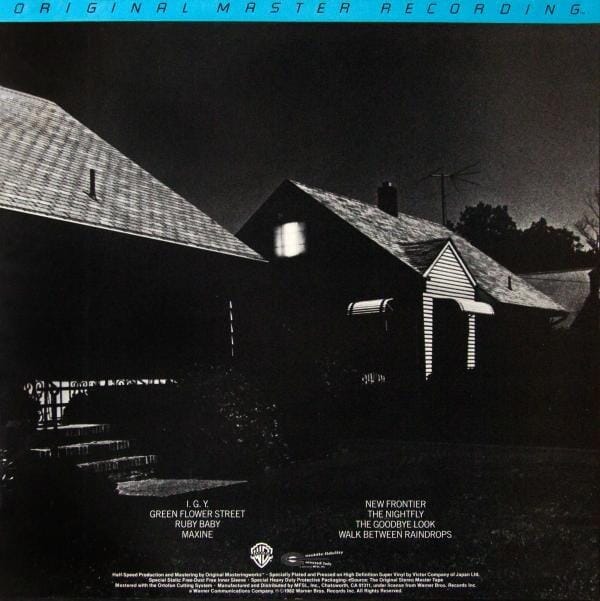
The back jacket of THE NIGHTFLY.
It's very cynical Fagen...how can I say it? The back jacket perfectly expresses such a sense of saber-bearing. It is interesting to see the two sides of this back cover when you put it on the second and fourth tracks. Also, this song is based on the famous jazz song "ON GREEN DOLPHIN STREET".
3.RUBY BABY
This is the only cover song on the album. It is a song about a young man who has a crush on Ruby, but for some reason, when Fagen takes it up, it sounds ironic... The original was by the Drifters, and later covered by Dion, the Beatles, and others. After Fagen, Bjork also covered it.
4.MAXINE
As in "GREEN FLOWER STREET," the relationship between the city and the suburbs is at the root of the film, which, as mentioned above, depicts the longing of a young man living in the countryside on the East Coast of the United States for the city.
The film cynically depicts a youthful coming-of-age story when chastity still existed in the United States, with a wish to go to the city with a lover named MAXINE, and sex was o-a-z-ke until graduation.
MAXINE" and the first song "I.G.Y." were covered by the jazz chorus group The Four Freshmen on their 1986 album. It's a great song, so please give it a listen as well.
5.NEW FRONTIER
It is the only PV on the album.
The story goes like this. Two lovers (the other is probably MAXINE) return home from a college graduation party to a house in New Jersey called NEW HOMES (MAUTI VISTA) (the same house is shown on the back jacket of THE NIGHTFLY).
There is a nuclear shelter in the yard of the house, and the two go down to it. Inside, they find a refrigerator, a TV, and a poster of "THE NIGHTFLY" on the wall, where they read the shelter manual, watch TV, and dance.
The cover of the shelter's manual says "Survival" and inside it are the words "What is Atomic Bomb?" "Atomic Fall Out?" were also written. Eventually, the two men fall asleep, and when the man wakes up, MAXINE, who should have been there, is gone.... When he emerges from the shelter, a person wearing a radiation protective suit is standing there, and when he takes off his helmet, there is MAXINE smiling at him. Relieved, the two hug each other, and the peace symbol appears and the end title.
In the music video, he hooks up with a girl at a graduation party and they go to a nuclear shelter together, but in the lyrics, there are many students at the party at the nuclear shelter and the girl he wants is among them. The previous song "MAXINE" says "We've got to hold out till graduation", so the girl in "NEW FRONTIER" must be MAXINE! MAXINE in "NEW FRONTIER" must be MAXINE! That's why I wrote "MAXINE".
The lyrics are about the feelings of young people when Kennedy became president under the slogan "New Frontier Policy" during the Cold War between the U.S. and the Soviet Union. Ironically, of course.
Nuclear shelters are a symbol of the New Frontier policy. The nuclear shelters built by fathers who danced to it are portrayed as useful only to bring girls in. This is the fagen.
They were the good old days, but really, we were all just dancing around believing in a hopeful future, weren't we? I think that's what they are trying to say. Irony toward the good old U.S. of A. is definitely at the root of the whole concept of the album.
6. the nightfly
Now, the night fly.
Here we would like to explain it, along with the mystery of the album cover.
I personally think it is the greatest record jacket of all time. I can't help but dig into such jackets. Let's start with the lyrics.
Lester Nightfly.
Good evening, Baton Rouge residents.
The volume will remain the same, right after this.
There are ties to people in life, aren't there?
It's inevitable.
Thanks for the call.
We look forward to hearing from you all the time.
This is commercial radio station WJAZ.
Jazz and chatter, sweet music from the foothills of Mount Belzoni.
Tonight is yours alone.
Until the dawn of night.
A generous cup of coffee and a Chesterfield.
But when I feel like crying, I want to have an icy heart if I can.
An icy heart....
If you want your girlfriend to dress in style, ask her out for a round of drinks....
This is a secret.
A secret between us.
This is commercial radio station WJAZ.
Jazz and chatter, sweet music from the foothills of Mount Belzoni.
Tonight is yours alone.
Until the dawn of night.
You don't seem to believe it.
But love used to be everything.
There must have been a moment of youth.
Do I burn my chest with that kind of thing sometimes too?
I have wondered.
But the answer is always the same.
That's who I am.
It's who you are.
Tonight, I am yours.
This is commercial radio station WJAZ.
Jazz and chatter, sweet music from the foothills of Mount Belzoni.
Tonight is yours alone.
Until the dawn of night.

Baton Rouge
A medium-sized city with a population of 380,105 (as of 1990) located about 100 kilometers west of New Orleans, Louisiana. In Japan, it is comparable to Toyohashi City in Aichi Prefecture and Takasaki City in Gunma Prefecture.

Belzoni
It is a small town located about 400 kilometers up the Mississippi River from Baton Rouge (vast plains in the vicinity. (There are no mountains or even hills in the area.)
Fagen himself described the background of THE NIGHTFLY in an interview.
'Life in the suburbs was tasteless and lacking in a cultural environment. Jazz, black music, late-night radio, the latest fads, and jazz values seemed like a wonderful counterpoint to the life I was leading."
'When I was little, I loved Chuck Berry and Fats Domino. But when I was 12 or 13, something changed. Something happened to rock 'n' roll. Rock 'n' roll somehow became mainstream. It became a white man's thing. I don't know if I want to know what the reason is, but I'm not going to relate it to racial issues. In any case, I soon forgot about that. I was introduced to that kind of late-night radio show at the same time. It seemed to have a vitality that rock and roll had lost. So I started listening to those radio shows. I was a lonely kid. I guess that had something to do with why I got into jazz.
The 'ET' who visited my bedroom was Thelonious Monk. Everything he represented was a dream world to me. But at the same time, jazz seemed more real to me than the world I lived in. It was more real than being in one of those new housing developments where all the houses are built exactly the same way. It was a really bleak place. So jazz was an escape from that world. I think it was an escape not only from the buildings and the landscape, but also from the climate of the time, the spiritual values of the Cold War era, and things like that."
(From "Reeling in the Years" published by Ritto Music)
Perhaps "THE NIGHTFLY" is the song that Fagen himself felt most deeply about. The world depicted by the cover is really well done.
Here is a description of what you see in the photo of the jacket (it's very detailed).
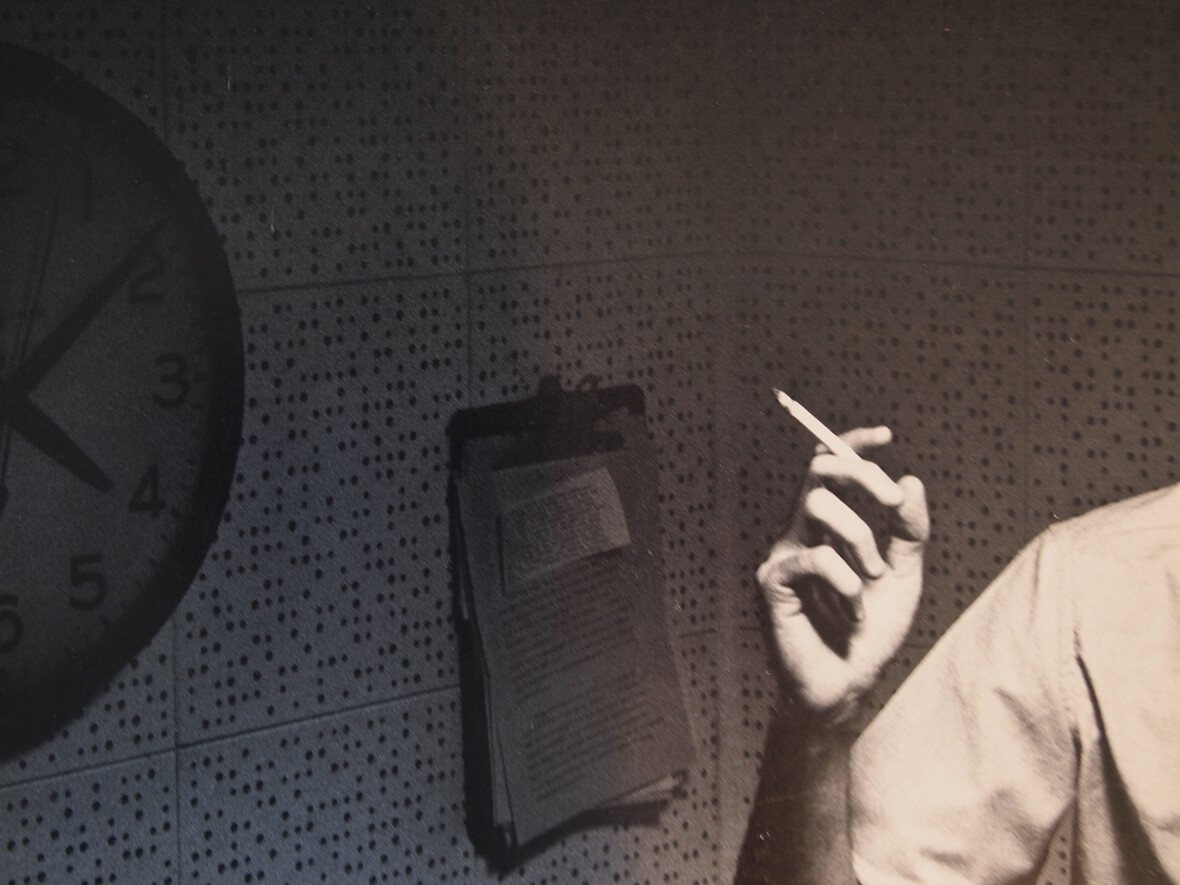
First, here are the hands of the clock, half in the picture, pointing to 4:09:03. Of course, it would be midnight, so that means AM.
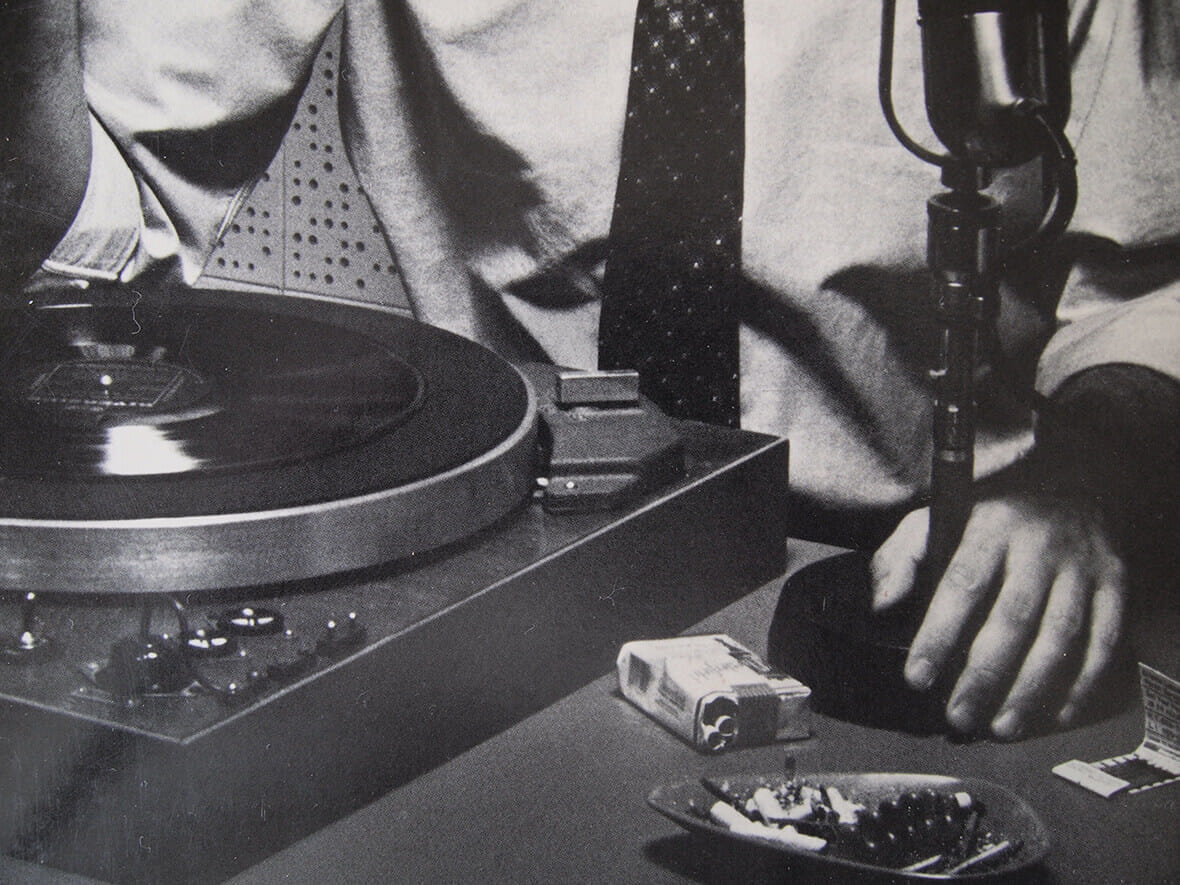
And the cigarette smoked by Fagen, dressed as Lester Nightfly, is a Chesterfield king size.
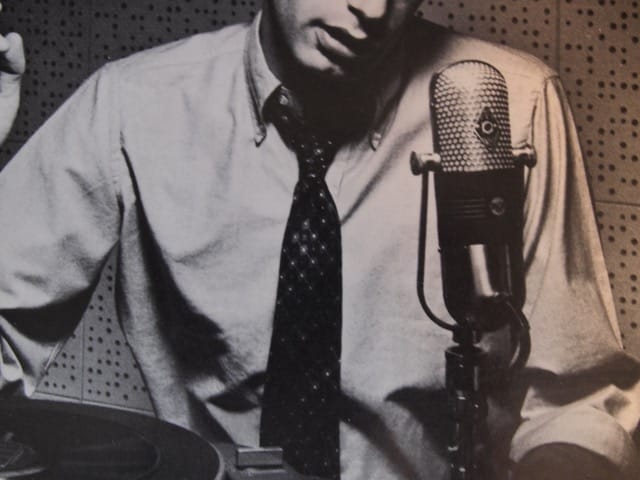
The ribbon microphone held in the left hand is RCA's 44DX or 77DX.
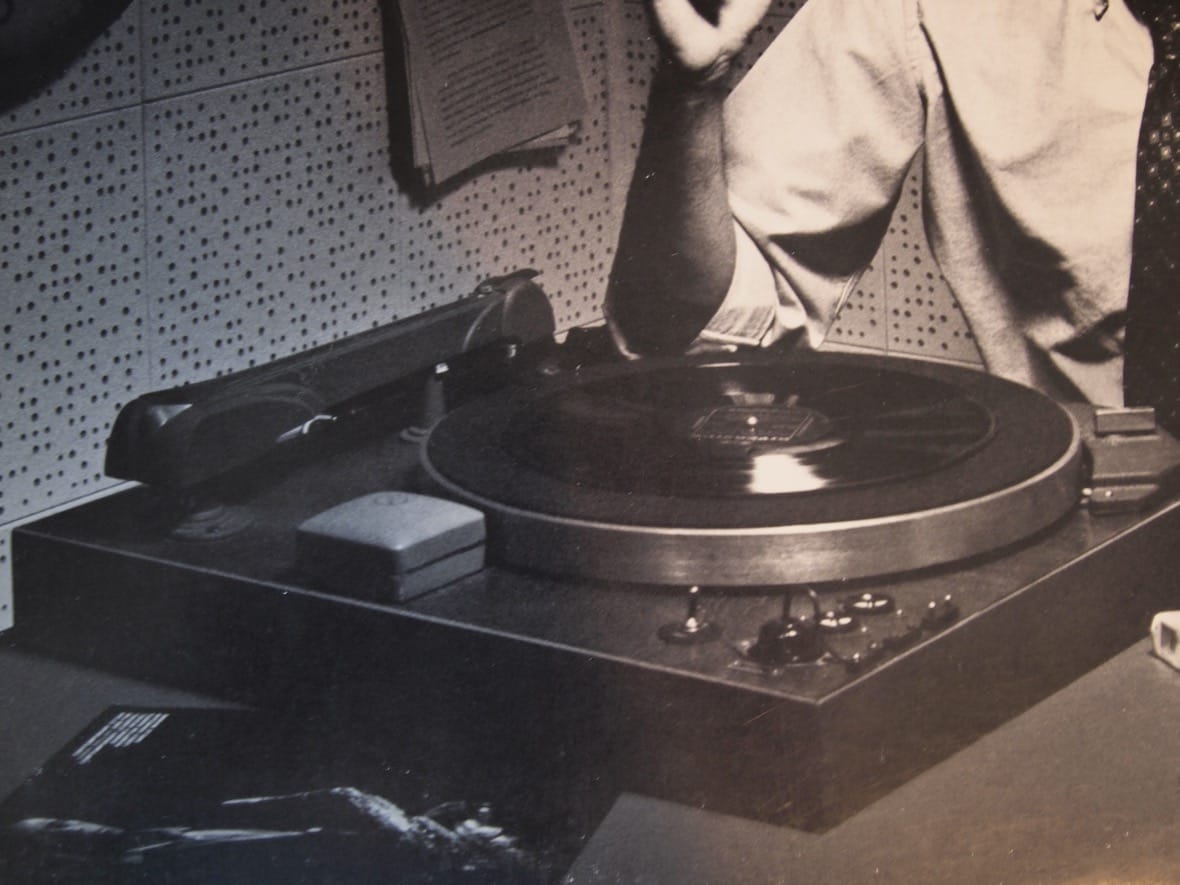
The turntable is a "Para-Flux A-16 Tonearm (16-inch 1950s model). The record in the set is Sonny Rollins' "CONTEMPORARY LEADER," which is very famous. The producer of Rollins' album was Lester Koenig. There is a rumor that this is where he got the name Lester.
The art director for the cover is George Delmerico and the photographer is James Hamilton, who was also a war photographer.
I know this is redundant, but I think it is the best design and direction for an album cover ever.
7. the goodbye look
I have loved this song and the next two songs since I was in middle school. The Latin rhythms and Carlton's guitar dispelled the clouds and gave me the image of a blue sky....
The last two songs were the most difficult for Fagen. The first half of the album is sung in the future or present tense lyrics from the first half to the middle of the album. Around the previous song, "THE NIGHTFLY," he started to use the past tense and seemed to be heading toward the end of the fantasy.
Opening with Porcaro's lilting samba beat, THE GOODBYE LOOK is inspired by the Cuban Revolution, but actually alludes to the breakup of two people (MAXINE and Lester).
This song has three guitars. Larry Carlton on lead, Dean Parks on rhythm, and Steve Kern on acoustic guitar. How extravagant! Too bad.
After this, a jazz-bound four-beat number that is bottomlessly cheerful and makes one wonder if the future outlook for the two is bright. The last number is a jazz-bound four-beat that makes you wonder if their future prospects are bright, and in fact, this is where the two of them end up.
The last two songs were covered by Mel Torme on his 1988 album MEL TORME AND THE MARTY PAICH DEK - TETTE REUNION. This is also the best.
8. walk between raindrops
This bright, Hollywood-like song blows away the sad and ambiguous atmosphere of the previous song. However, it contains a lot of cynical connotations and does not have a happy ending. It is like "SINGIN' IN THE RAIN" used at the end of the movie "A Clockwork Orange"....
The setting is Miami, two happy people. The first and second lines are about the past, and the third line is about the future. At first glance, it seems as if they have a bright future ahead of them.
After "We fought" in the first verse, the only present tense "Now I can't remember why ". It can be interpreted as if it is so far in the past that I can't remember.
It continues, "After all the words were said and tears were gone, we vowed we'd never say goodbye. We vowed we'd never say goodbye again.
It can be interpreted that the two who had a goodbye look (The Goodbye Look) did not break up after all, and that the reason they cannot remember is because they are happy now, but comparing the lyrics of the second and third numbers, there is something that can be understood.
When we kissed → In my dream, we could hear → I can hear, we watched → I can see, You opened → You'll open, But we walked → And we'll But we walked → And we'll walk.
You will notice that "We" has changed to "I" and the past tense has changed to the future tense. What this means is that they have broken up. "In my dream," so it could be that you are using the 1st person because it is in your dream and you are the one who is dreaming. However, seeing happy days in dreams is often the opposite of the pattern in reality. The use of "but" and "and" in the last phrase is also interesting.
Anyway, the piece is unified from beginning to end with a perfect concept and performance, designed to be interpreted in any number of ways. But in the end, the mystery remains a mystery, and no answers are provided.
Professor Feigen, well done! That's all I can say. I will be paying attention to this album as long as I live.
Finally, I would like to introduce the non-original recordings and say that I will see you next time.
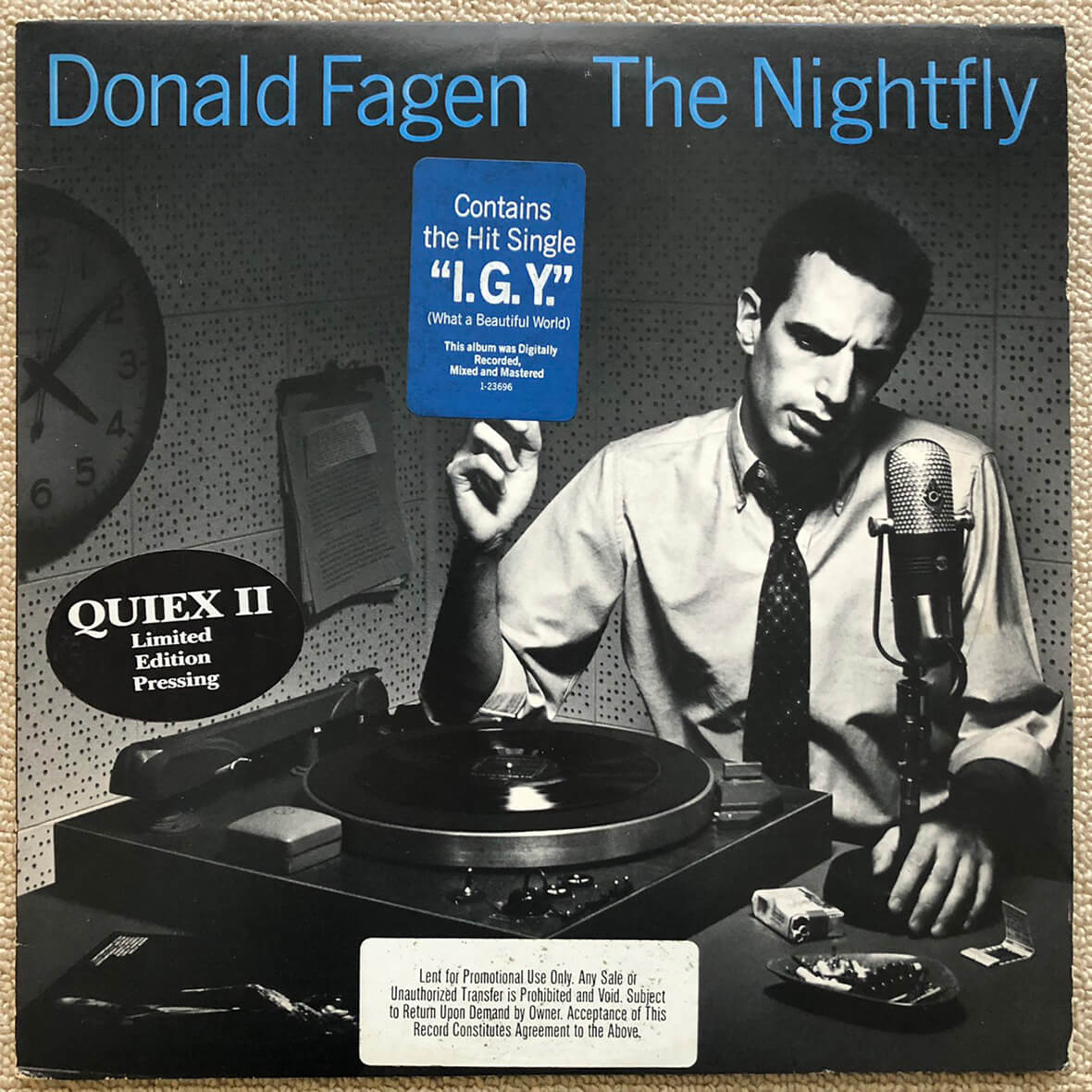
This is a very rare high quality QUIEX II pressing that was promo-only and distributed only to industry insiders. MASTERDISK machine stamped on both sides, with a handwritten RL stamp meaning master ROBERT LUDWIG's cutting and a handwritten SLM stamp meaning SHEFFIELD LAB MATRIX, which produces high quality sound mothers. Also known as "LUDWIG HOT MIX".
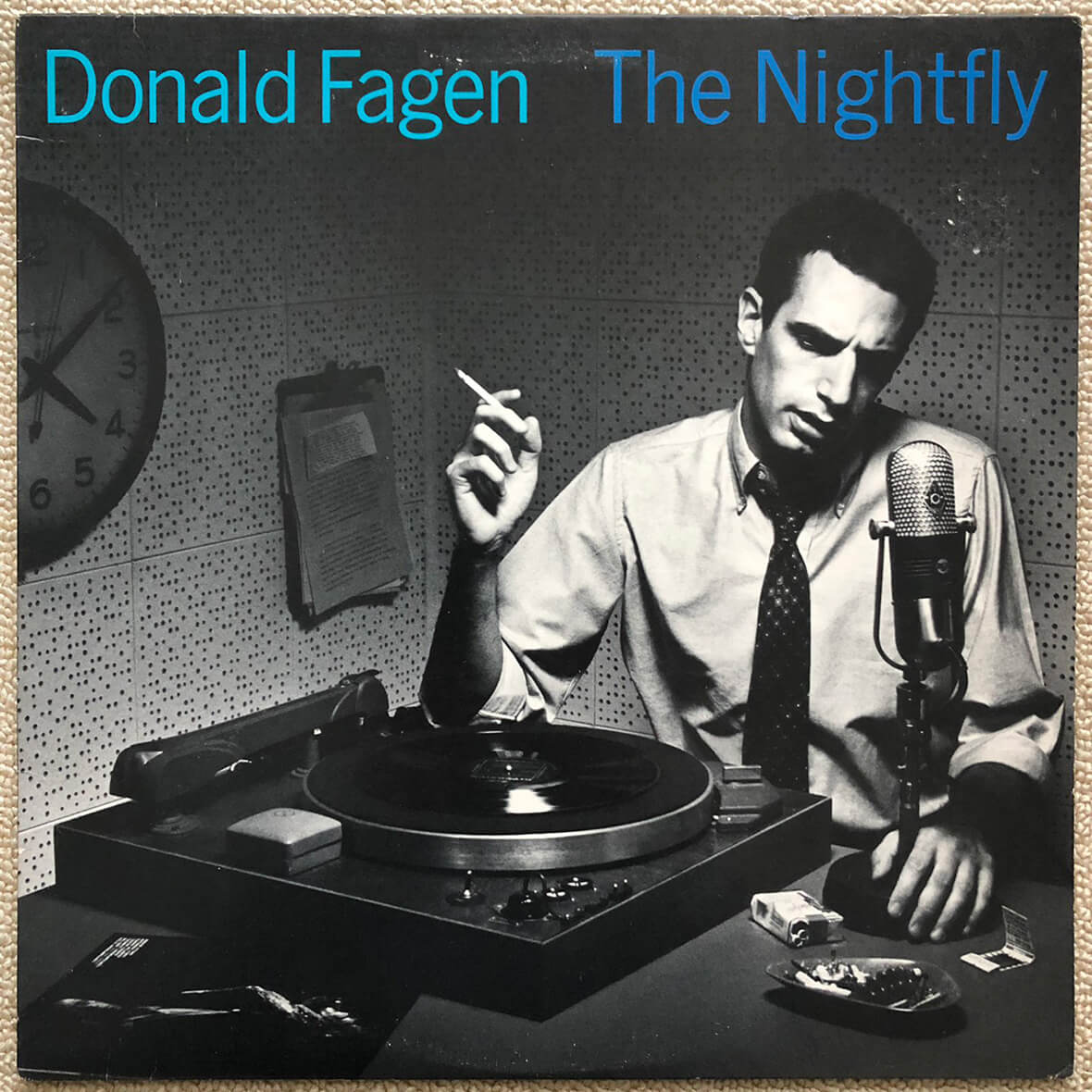
Two-color printing of title and name. MASTERDISK machine stamped on both sides, ROBERT LUDWIG's handwritten RL stamp and handwritten SLM stamp. Brown label.
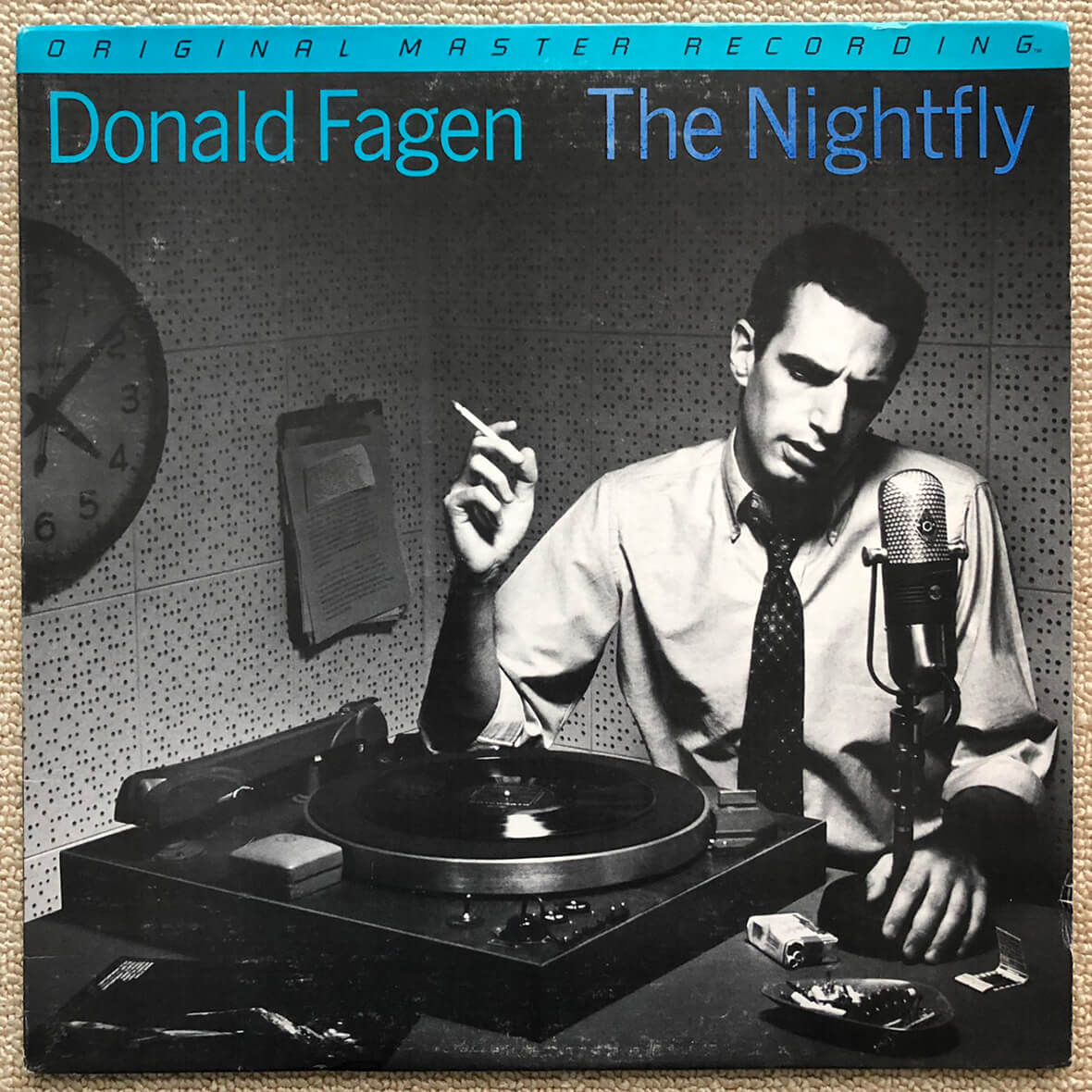
Two-color ORIGNAL MASTER RECORDING vinyl. Specially Plated and Pressed on High Definition Super Vinyl by Victor Company of Japan Ltd.
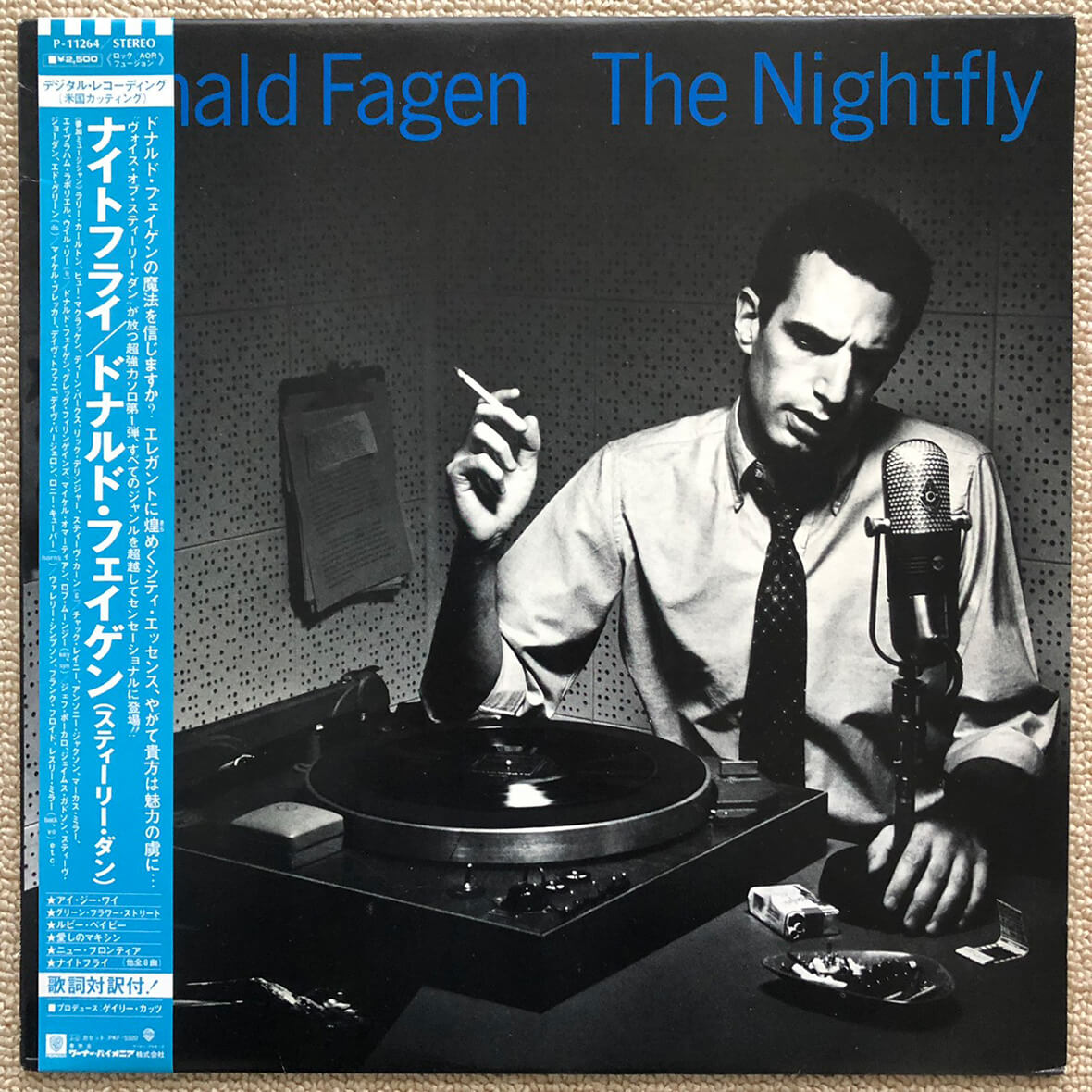
One-color Japanese vinyl. Digitally recorded U.S. cutting. MASTERDISK machine stamp, ROBERT LUDWIG's handwritten RL stamp and handwritten SLM stamp on both sides. Raw-colored label.
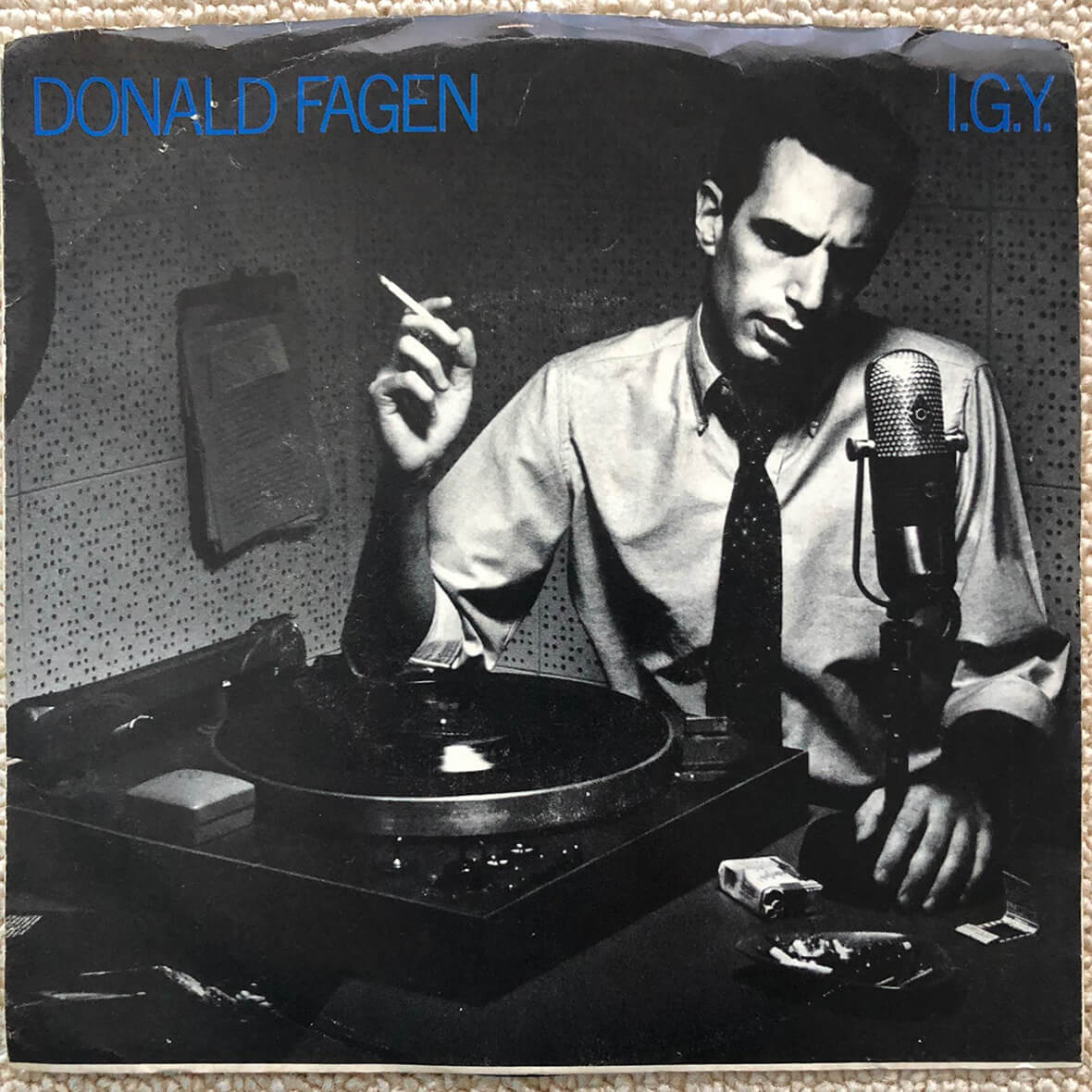
I.G.Y. b/w Walk Between Raindrops 7inch single with MASTERDISK machine stamp on both sides and ROBERT LUDWIG's handwritten RL stamp. Ivory label.
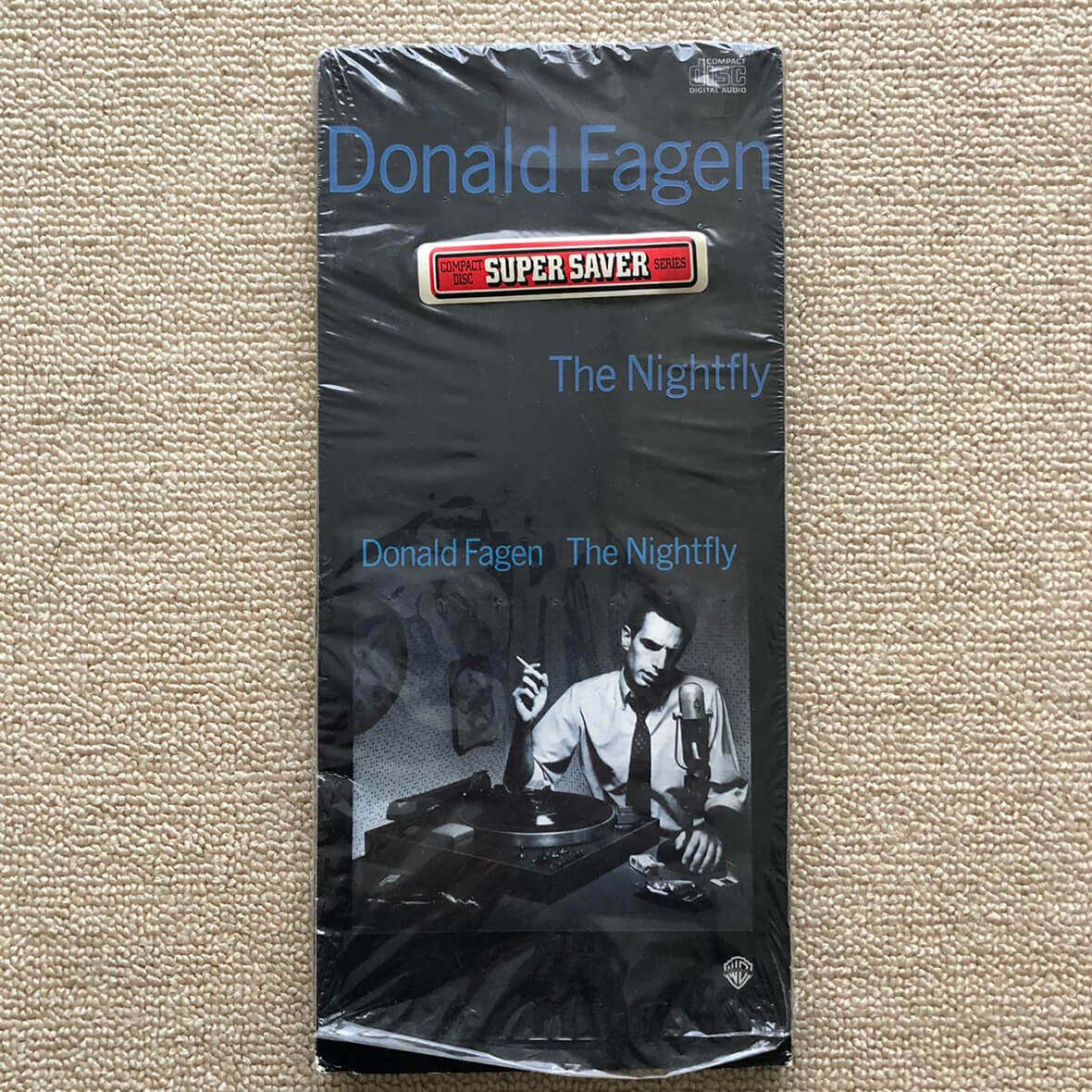
Imported vertical CD.
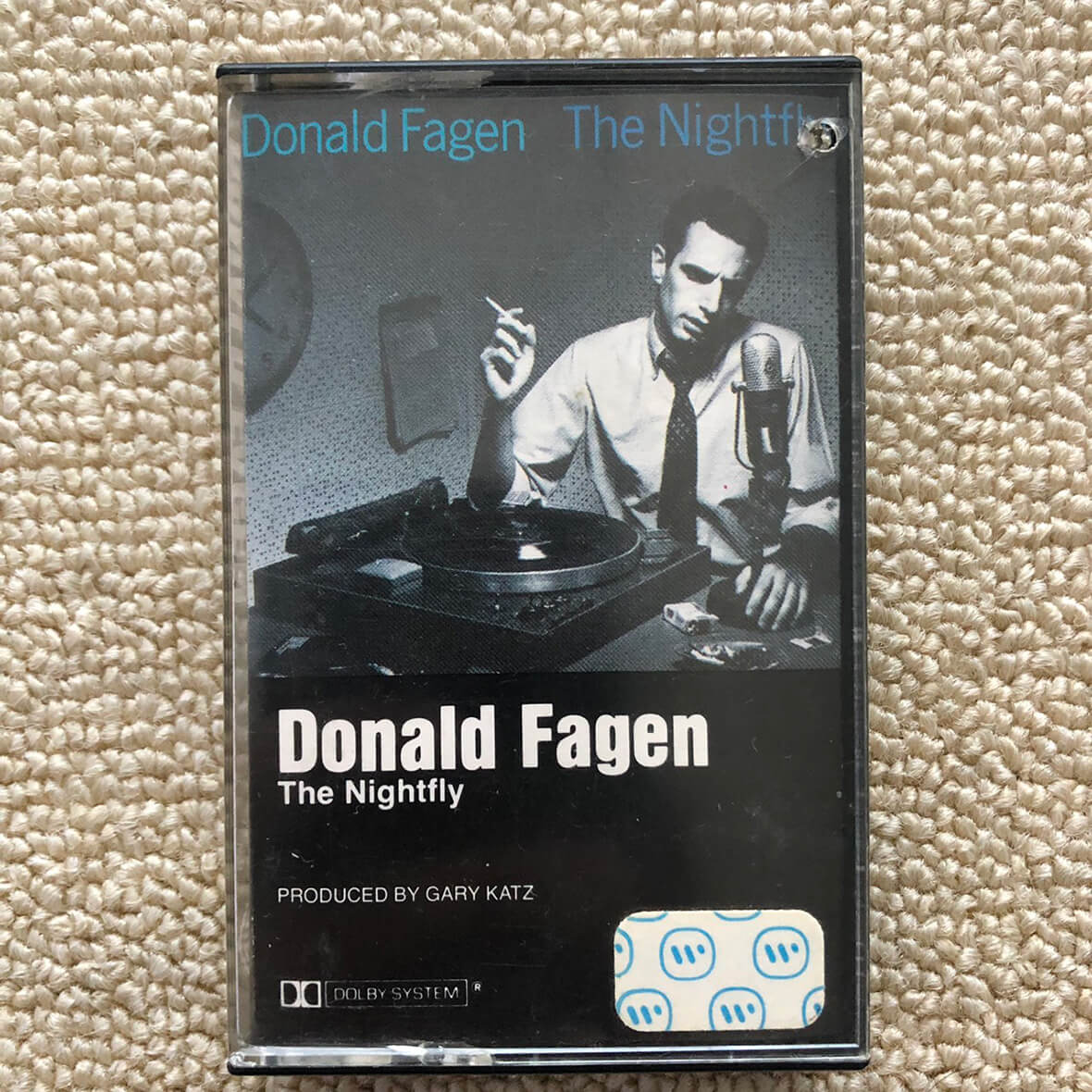
Cassette tapes.
PROFILE

Born in Tokyo in 1974, he dropped out of Kuwasawa Design School in 1996 and started a custom-made shirt brand while working on costumes for theater companies and entertainers. 2000 AW he started his fashion brand "Yuge". In June 2018, he opened "Adult Oriented Records" in Yoyogi Uehara, and is currently presenting "modern AOR". AOR" in the modern age.







